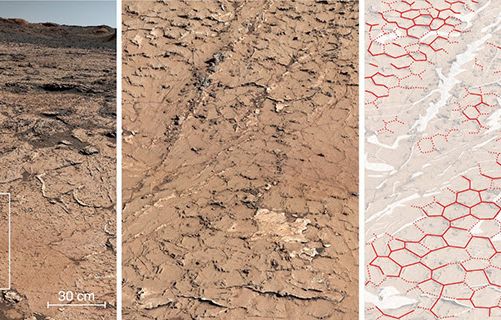A discovery that could greatly advance the research of all scientists: where does life come from? Patterns indicative of a cyclical climate, similar to that of Earth, have just been discovered on Mars by scientists from the CNRS, theToulouse III University – Paul Sabatier andClaude Bernard Lyon 1 Universitythanks to the Curiosity rover of the NASA, with the participation of CNES. This major discovery opens the way to new research perspectives on the origin of life.
Unlike the surface of the Earth, that of the planet Mars is not renewed by plate tectonics. It has thus preserved vast spectacular lands through the abundance of fossil rivers and lakes dating back several billion years. Since 2012, NASA’s Curiosity rover, the first to explore such remains, had already detected the presence of simple organic molecules that could be formed by geological or biological processes.
But the emergence of primitive life forms, as imagined by scientists, first requires favorable environmental conditions for the spontaneous arrangement of these elements into complex organic compounds. This is precisely what a research team from the Astrophysics and Planetology Research Institute (CNRS/University of Toulouse III – Paul Sabatier/CNES) and from the Lyon Geology Laboratory: Earth, planets, environment (CNRS/ ENS de Lyon/Université Claude Bernard Lyon 1) and their American and Canadian colleagues have just highlighted.
A seasonal climate
They discovered deposits of salts forming a hexagonal pattern in sedimentary layers dated 3.8 to 3.6 billion years ago, thanks to the American Mastcam instrument and the Franco-American ChemCam instrument from Curiosity. Similar to the hexagons observed in seasonally drying terrestrial basins, they constitute the first fossil evidence of a cyclic, regular and long-lasting Martian climate, organized into dry and wet seasons. By allowing molecules to interact at different concentrations and repeatedly, independent experiments in the laboratory have shown that this environment provides the ideal conditions for forming complex compounds that are precursors and constituents of living organisms such as RNA.
These new observations allow scientists to take a fresh look at the large-scale images obtained from orbit, which have already located many terrains with a similar composition. They now know where to look for traces of the natural processes at the origin of life, of which there is no trace left on Earth.

